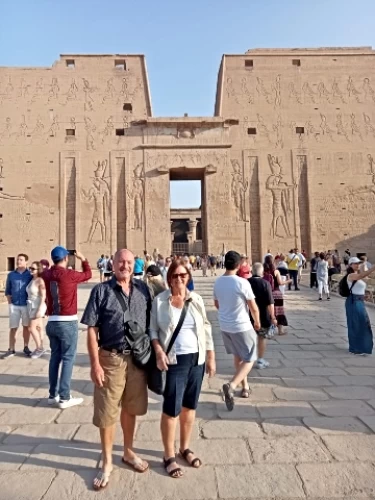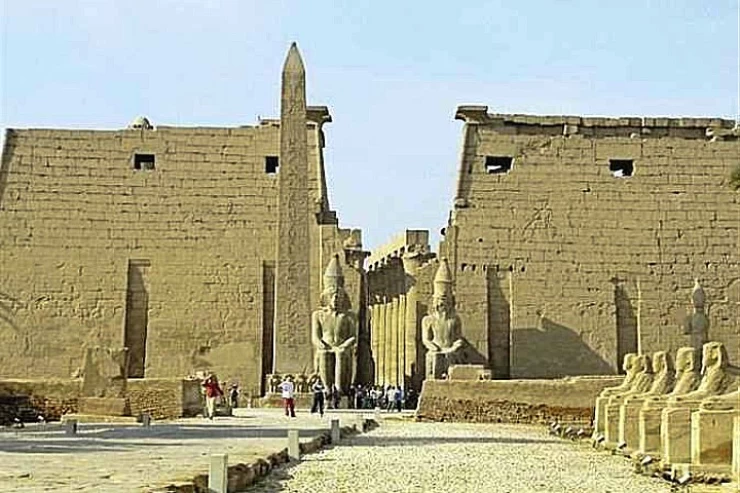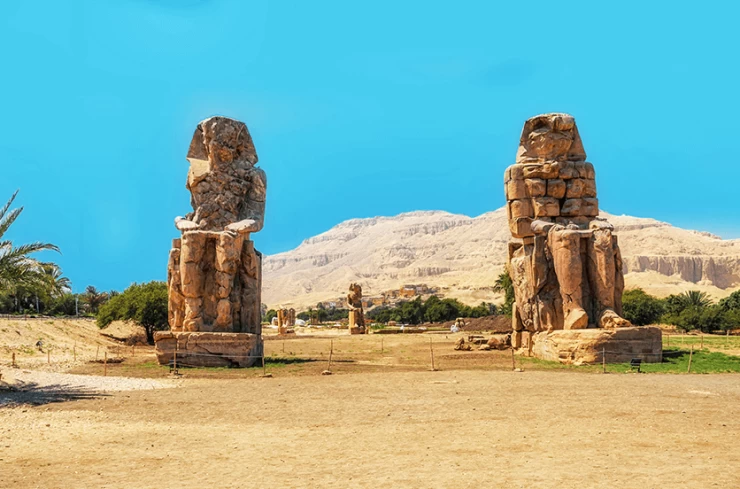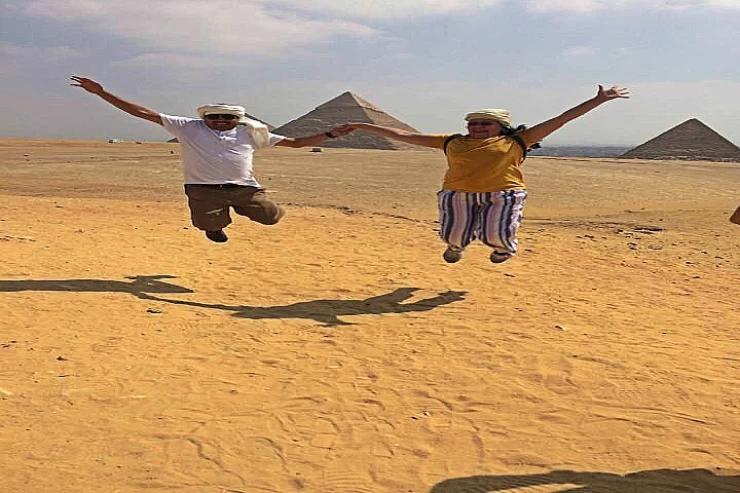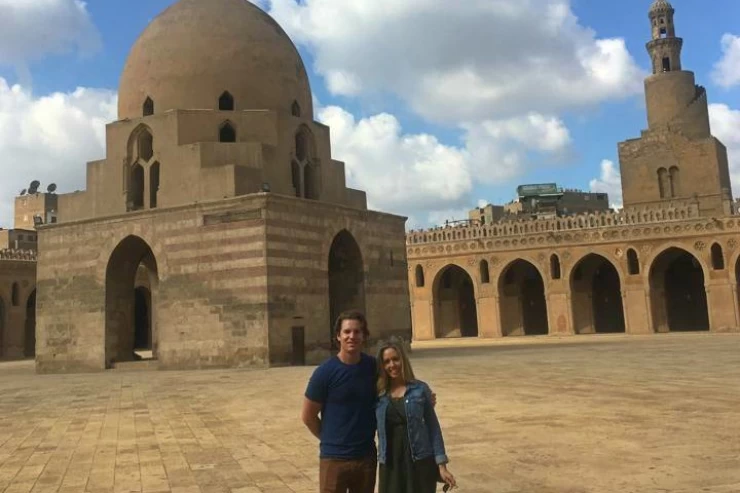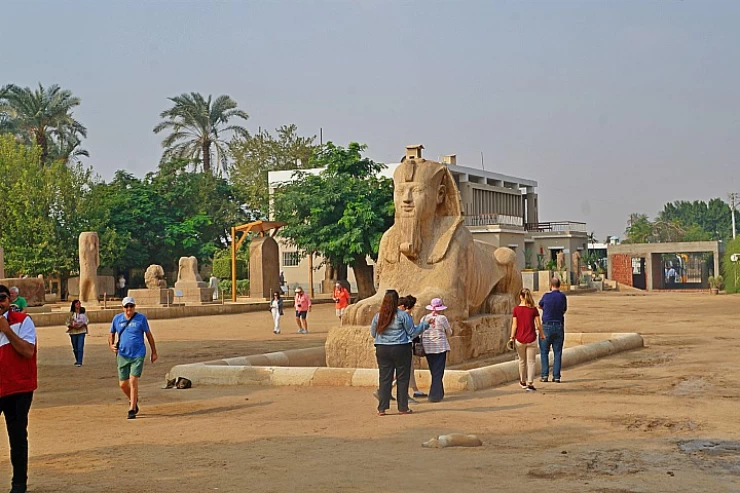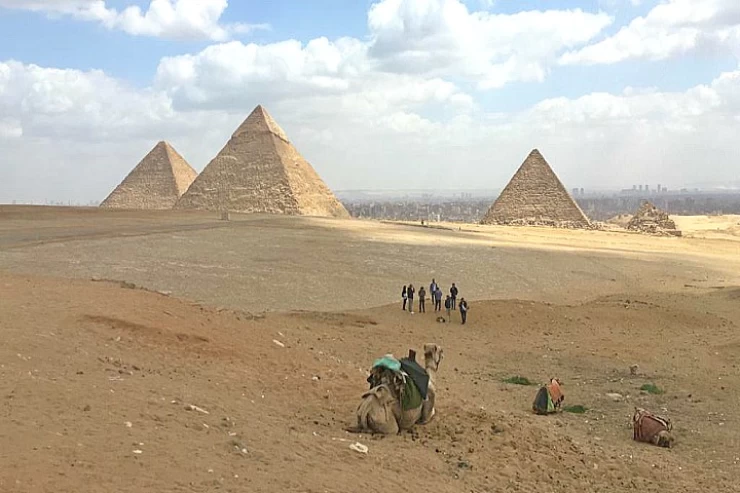Day Trip to Abu Simbel by Plane from Cairo
Overview
Day Trip to Abu Simbel by Plane from Cairo
Experience the splendor of King Ramses II's Abu Simbel temples on this all-day private trip departing from Aswan. Discover more about the ancient pharaohs' lives by traveling south near the Sudanese border to view this UNESCO World Heritage site. Give yourself plenty of time to independently explore the temples once your Egyptologist guide has given you background knowledge, and then head back to Aswan.
During this full-day trip to Abu Simbel, we will showcase the unforgettable splendor and grandeur of ancient Egypt to all our travelers. We will provide you with Egyptian tour guides and a private, air-conditioned vehicle. A private, all-day flying excursion from Cairo to Aswan will allow you to see the stunning Abu Simbel temples. You will learn more about the greatest ancient Egyptian pharaohs and discover the ancient Egyptian civilization.
Day Trip to Abu Simbel by Plane from Cairo
Experience the splendor of King Ramses II's Abu Simbel temples on this all-day private trip departing from Aswan. Discover more about the ancient pharaohs' lives by traveling south near the Sudanese border to view this UNESCO World Heritage site. Give yourself plenty of time to independently explore the temples once your Egyptologist guide has given you background knowledge, and then head back to Aswan.
During this full-day trip to Abu Simbel, we will showcase the unforgettable splendor and grandeur of ancient Egypt to all our travelers. We will provide you with Egyptian tour guides and a private, air-conditioned vehicle. A private, all-day flying excursion from Cairo to Aswan will allow you to see the stunning Abu Simbel temples. You will learn more about the greatest ancient Egyptian pharaohs and discover the ancient Egyptian civilization.
Inclusion
- Entry fees for visiting the sites in Egypt.
- A personal Egyptologist guide for your journey.
- Tickets for flights from Cairo to Aswan and back.
- Your vacation to Egypt includes all services and taxes.
- During the excursion, there was mineral water in the car.
- Transportation from Aswan to Abu Simbel and back to Aswan airport in a private, air-conditioned car.
Exclusion
- Any extras not mentioned in the itinerary.
- Tipping is not included in the price of your Egypt trips.
- During Ramadan, tourist sites close at 3:00 pm, so the tours usually start one hour in advance.
- Prices are valid during Christmas and New Year tours in Egypt or Egypt Easter tours.
Itinerary
You will be picked up by our agent early in the morning and driven to Cairo International Airport. The US Air Force base at Paine Field, five kilometers from Almaza Airport, was established in the 1940s to support the Allied forces during World War II, marking the beginning of Cairo International Airport's history. You will start your trip to the Abu Simbel Temples in a private, air-conditioned car as soon as you arrive.
The Battle of Kadesh, which took place at the Abu Simbel Temple and hundreds of other temples including Luxor and the Ramesseum, was something that King Ramses II was always proud of. The king's horse is bigger than the opposing horses in the war scenes that are painted on the walls. There are several paintings and representations of Ramesses II around the temple.
Ramses II, a pharaoh of the Golden Age of Egypt, had more children and constructed more monuments than any previous Egyptian monarch. His 66-year reign is considered the height of Egypt's power and magnificence.
He constructed a temple for Nefertari, smaller than his own at Abu Simbel, since she had a unique personality despite his numerous marriages. Ramses II married Nefertari at the age of 19 before to ascending to the throne. Nefertari was a commoner rather than a member of the royal court. Queen Nefertari was the chief wife of Egypt's most famous pharaoh, King Ramses II (1290-1224 BC), and the mother of six of his most important children. The king, out of his great love for her, had a magnificent tomb dug for her in the Valley of the Kings, and he also built a temple for her in the natural rock at Abu Simbel, next to his great temple.
After enjoying the visit to the two temples, you will be transferred back to Cairo.
Price
| Number of Persons | Prices |
|---|---|
| 1 Person | $510 Per Person |
| 2 - 3 Persons | $430 Per Person |
| 4 - 6 Persons | $400 Per Person |
| 7 - 10 Persons | $380 Per Person |
Start from : 380
Check Availability
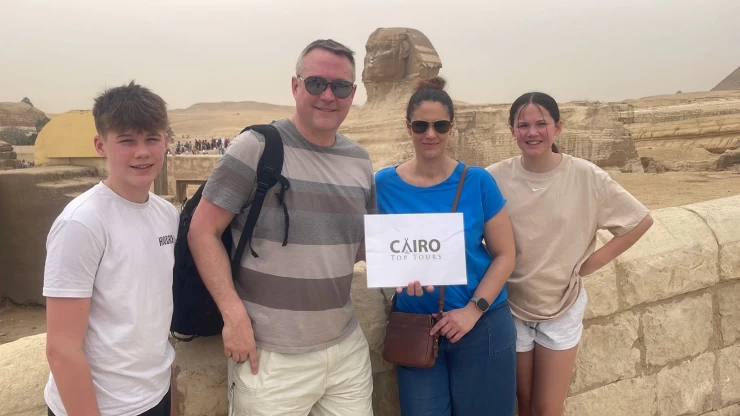
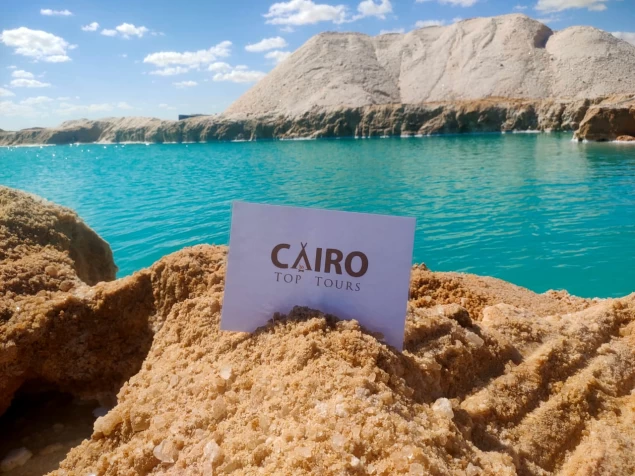
You Also May Like
Looking for something different? check out our related tour now, or simply contact us to tailor made your Egypt tour
Tour of Cairo's Egyptian Museum and Giza Pyramids
Enjoy the Egyptian Museum, which contains the world's largest collection of artefacts from the Egyptian civilisation. Also on this day you will enjoy the largest, most famous and tallest Egyptian pyramids, which are considered one of the most prominent tourist attractions for Egypt, and one of the most important sources of national income in Egypt.
Full-Day Islamic and Coptic Cairo Tour and Egyptian Museum
Visit Coptic Egypt and Islamic Egypt as well as the Egyptian Museum to enjoy Egypt's fascinating history, where your guide will provide you with information about the most important information and legends with deep meaning to the pharaohs. Don't miss out on our special offers tailored just for you.
Full-Day Tour to Giza Pyramids, Memphis, and Sakkara
Enjoy a tour with Cairo Top Tours to the pyramids, Saqqara, and Memphis. Explore the pyramids that reflect the evolution of Egyptian civilization. Built over a long period of time, the pyramids in ancient Egypt show an evolution in the architectural styles and engineering techniques used in construction.
Egypt Cairo Transit Tours
Enjoy a tour from Cairo airport with us. The area of the Giza Pyramids is one of the most famous monuments of Pharaonic Egypt, consisting of 3 pyramids "Cheops, Khafre, and Menkaure", where the first is considered one of the Seven Wonders of the World, and a few steps to the East, there are 3 small piles of stones (20 meters high) representing the pyramids of the Queens.
Reviews of the Middle East and Egypt Vacations
The kind of tours that budget travelers dream of-Many have acknowledged this fact on our social media pages, Trip Advisor, and You Tube videos. They do have professionals who show and explain everything for every location they tour in Egypt and the Holy Land.
Customer feedback samples that were destining to Egypt Tours include low-cost tours of Egypt featuring patently well-versed tour guides to put them through the history of every destination. They are displayed and reflected on Trip Advisors, YouTube videos, and our social media profiles.
Have no fear Most Egyptians living in Cities have a basic command over the English language and some English words and phrases. However the same cannot be said for French, Italian, Spanish and finally German. Nevertheless, Professionals working in the tourism sector have easily adapted to visitors who don't speak Arabic. Satisfying the needs of most travellers with a combination of English and other lingual phrases.
Visiting Abu Simbel from Cairo on a day tour is possible, but it typically involves a long journey as Abu Simbel is located in the far south of Egypt, near the Sudanese border. The trip would require a domestic flight or a very lengthy drive.
Abu Simbel used to be somewhere else before it became Abu Simbel. It is not only for one god, but for many. People forgot about Abu Simbel for a very long time. A long time ago, people started building it. The temple is designed to face the sun.
Abu Simbel is an iconic archaeological site located in Aswan, Egypt, and it is famous for its monumental rock-cut temples, primarily the Great Temple of Ramses II. The history of Abu Simbel is rich and fascinating, with significant historical events and remarkable engineering achievements. Here's an overview of the history of Abu Simbel:
1. Construction by Ramses II (c. 13th century BCE): The construction of the Abu Simbel temples began during the reign of Pharaoh Ramses II, who ruled Egypt from around 1279 to 1213 BCE during the 19th Dynasty of the New Kingdom. The primary purpose of these temples was to commemorate Ramses II's victory at the Battle of Kadesh and to honor the gods Amun, Ra-Horakhty, and Ptah.
2. Monumental Temples: Abu Simbel consists of two massive temples carved into the sandstone cliffs along the banks of the Nile River.
The Great Temple: The larger of the two temples is dedicated to Ramses II himself, and it features four colossal seated statues of the pharaoh at the entrance. The interior of the temple is adorned with intricate carvings depicting the Battle of Kadesh and religious scenes.
The Small Temple (Temple of Hathor): The smaller temple is dedicated to Nefertari, the chief wife of Ramses II. It features statues of Ramses II and Nefertari, and the interior contains scenes of Nefertari with the goddess Hathor.
3. Relocation in the 1960s: In one of the most remarkable engineering feats of the 20th century, the temples of Abu Simbel were relocated in the 1960s. The construction of the Aswan High Dam threatened to submerge the temples beneath the waters of Lake Nasser. To save these invaluable treasures, an international effort disassembled and moved the temples to higher ground, where they were reconstructed. This preservation effort ensured that Abu Simbel could continue to be appreciated by future generations.
4. UNESCO World Heritage Site: Abu Simbel was designated as a UNESCO World Heritage Site in 1979 in recognition of its cultural significance and the remarkable efforts made to save it from inundation.
Tour operators typically have cancellation policies, so it's essential to understand the terms and conditions before making a reservation.
Abu Simbel is an incredibly significant and iconic site in Egypt, known worldwide for its historical and cultural importance. Here's why it's highly regarded among tourists:
- Ancient Temples: The Abu Simbel temples, built during the reign of Pharaoh Ramses II in the 13th century BCE, are masterpieces of ancient Egyptian architecture.
- Engineering Marvel: The temples were relocated in the 1960s to save them from being submerged by the rising waters of Lake Nasser after the construction of the Aswan High Dam.
- Artistic Significance: The temples boast remarkable artistic and historical significance, showcasing detailed reliefs, statues, and hieroglyphs that depict scenes from ancient Egyptian mythology, battles, religious rituals, and the divine status of the pharaoh.


Cairo Top Tours Partners
Check out our partners

